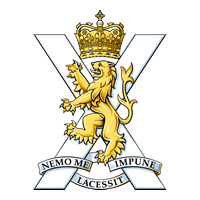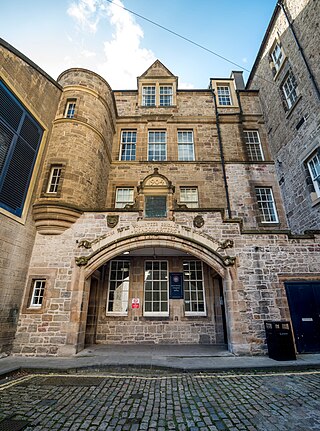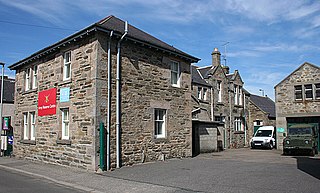
The Highlanders, 4th Battalion, Royal Regiment of Scotland is an infantry battalion of the Royal Regiment of Scotland.

The 51st Highland Volunteers is a battalion in the British Army's Army Reserve or reserve force in the Scottish Highlands, forming the 7th Battalion of the Royal Regiment of Scotland, also known as 7 SCOTS. It is one of two Reserve battalions in the Royal Regiment of Scotland, along with 52nd Lowland, a similar unit located in the Scottish Lowlands.

The Queen's Own Cameron Highlanders or 79th Regiment of Foot was a line infantry regiment of the British Army, raised in 1793. It amalgamated with the Seaforth Highlanders to form the Queen's Own Highlanders in 1961.

The Royal Regiment of Scotland (SCOTS) is the senior and only current Scottish line infantry regiment of the British Army Infantry. It consists of three regular and two reserve battalions, plus an incremental company, each formerly an individual regiment. However, three regular battalions maintain their former regimental pipes and drums to carry on the traditions of their antecedent regiments.

152nd Infantry Brigade was a formation of Britain's Territorial Force/Territorial Army that was part of 51st (Highland) Division in both World Wars. From its origins in the 19th Century Volunteer Force it was based in Inverness and was composed of Highland battalions. It served on the Western Front in World War I, and after it was captured at Saint-Valery-en-Caux early in World War II it was reformed from its 2nd Line and saw action in North Africa, Sicily and North West Europe.

153rd Infantry Brigade was a formation of Britain's Territorial Force/Territorial Army that was part of 51st (Highland) Division in both World Wars. From its origins in the 19th Century Volunteer Force it was based in Aberdeen and was composed of Highland battalions. It served on the Western Front in World War I, and after it was captured at Saint-Valery-en-Caux early in World War II it was reformed from its 2nd Line and saw action in North Africa, Sicily and North West Europe. It continued serving postwar until the reduction of the Territorial Army in the 1960s.
The 166th Brigade was an infantry brigade of the British Army that saw active service in the First World War and remained in the United Kingdom throughout the Second World War.

The Forrest Hill drill hall is a former military installation in Edinburgh, Scotland. The building is now owned by the University of Edinburgh.

The Bank Street drill hall is a former military installation in Brechin, Scotland.

The Ferry Road drill hall, known locally as Seaforth Barracks, is a military installation in Dingwall, Scotland.

The Old Bank Road drill hall is a military installation in Golspie, Scotland.

The Cooper Park drill hall is a former military installation in Elgin, Scotland.

The Guild Street drill hall is a former military installation in Aberdeen, Scotland.

The Union Street drill hall is a military installation in Keith, Scotland.

The Kinneskie Road drill hall is a former military installation near Banchory, Scotland.

The High Street drill hall is a former military installation in Paisley, Scotland.

The Princes Street drill hall is a former military installation in Stirling, Scotland.

The Phoenix Street drill hall is a former military installation in Lancaster, Lancashire.

The New Bridge Street drill hall is a former military installation in Truro, Cornwall.

The Corn Exchange is a former chapel, trading facility and military installation at Bank Street in Tonbridge, Kent.



















